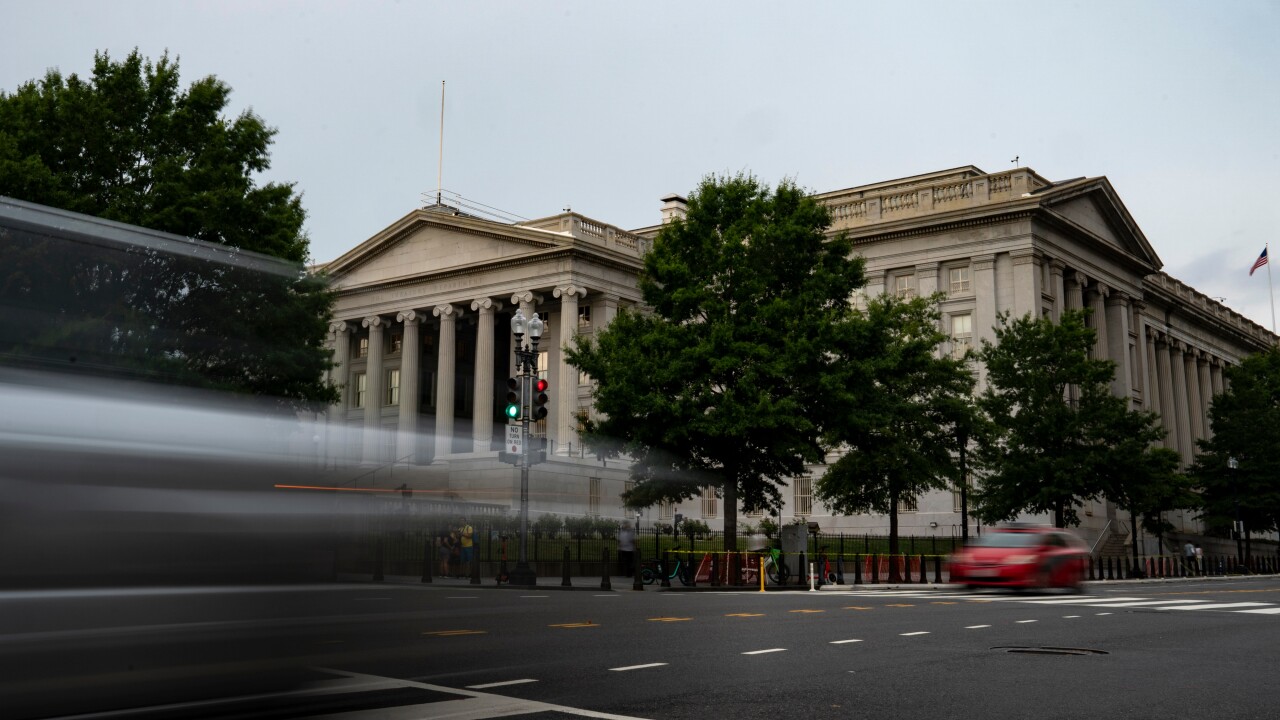-
The market retraced an opening selloff, with longer-dated benchmarks outperforming the front end.
December 2 -
The economist, who runs Roubini Macro Associates, is positioning for a curve steepener, a popular Treasuries trade where the gap between long- and short-dated yields widens.
November 27 -
Tuesday's declines lifted yields by one to four basis points across maturities after Trump said he'd impose additional 10% tariffs on goods from China and 25% tariffs on all products from Mexico and Canada.
November 26 -
Donald Trump's presidential victory, stubbornly elevated inflation and a steady drumbeat of strong economic data have pushed 10-year Treasury yields up sharply since mid-September.
November 25 -
Yields on 30-year bonds rose as much as 6 basis points to 4.68%, a level last seen at the end of May.
November 18 -
The benchmark 10-year Treasury yield topped 4.5% for the first time since May after the release of retail sales data including hefty upward revisions.
November 15 -
Treasury yields rose the day after President-elect Donald Trump was picked. The short-term result: It's harder for commercial real estate lenders and borrowers to find common ground.
November 15 -
Two-year yields — more closely tied to the Fed's decisions than longer-maturity debt — reached the highest level since July, and three- to 30-year yields rose at least 10 basis points.
November 12 -
So-called Trump trades seesawed as investors sought hedges before election day, only to pile back in as the results became clear.
November 8 -
Traders are looking to central bankers for clues on how Trump's tax-cut and tariff policies could alter their outlook for global growth and inflation.
November 7 -
Trump has promised levies on US imports that would upend global trade, tax cuts that would further stretch the federal budget and deportations that could shrink the pool of cheap labor.
November 6 -
The yield on 10-year Treasuries rose as much as five basis points to 4.33%, nearing an over three-month high, with strategists and investors warning of outsized market swings on the results of the vote.
November 5 -
A measure of daily yield swings is at its highest in a year as traders position for further losses that could send 10-year yields as high as 4.5% over the next three weeks.
October 31 -
Yields across maturities rose at least four basis points, reaching the highest levels in more than two months, after the monthly auctions of two- and five-year Treasury notes both drew higher-than-anticipated yields.
October 28 -
Buybacks of Treasuries that are infrequently traded relative to its newest, or "on the run," notes and bonds, are intended to support market resilience by creating opportunities for dealers to offload them.
October 21 -
Traders are pricing in roughly 20% odds that the Fed holds rates steady in either November or December.
October 11 -
Five-year notes were the worst performer among Treasury benchmarks, with yields rising by more than 5 basis points, though all rose by at least 4 basis points.
September 25 -
There's been a marked change in trading volume over the past four years at that time as well as a drop in transaction costs that coincide with the growth of passive funds that track index changes.
September 24 -
First-half net trading revenue rose 81% to $4.9 billion from the same period a year earlier at Citadel Securities, and gained 78% to $8.4 billion at Jane Street.
September 3 -
First-half net trading revenue rose 81% to $4.9 billion from the same period a year earlier at Citadel Securities, and gained 78% to $8.4 billion at Jane Street.
September 3


















